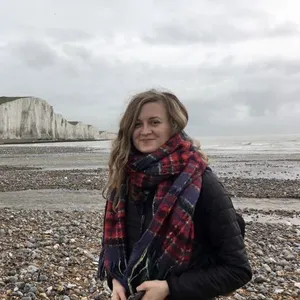NATIONAL MUSEUM OF NATURAL HISTORY
Six Free Natural History Programs Streaming in November
Stream these programs and more through the Smithsonian’s National Museum of Natural History
:focal(524x82:525x83)/https://tf-cmsv2-smithsonianmag-media.s3.amazonaws.com/filer_public/21/a6/21a63370-bed9-48c2-8f81-d7c77d8f0e9a/person_wearing_winter_gear_kneeling_in_the_snow_holding_up_a_fishing_line_with_a_small_fish_hooked_on_it.jpg)
An opportunity to draw prehistoric creatures with world-renowned artists; an exploration of how fossils go from dusty rocks to museum-worthy specimens and a lesson on the strange and surprising ways dinosaurs moved; stream these free programs and more this November through the Smithsonian’s National Museum of Natural History.
Predicting and Preventing the Next Pandemic
Nov. 3, 12 p.m. ET
/https://tf-cmsv2-smithsonianmag-media.s3.amazonaws.com/filer_public/99/e2/99e2678f-46a1-4de0-ae4f-d596e0e7d1d6/scientist_wearing_ppe_and_holding_a_bat_in_gloved_hands_outside_on_a_sunny_day.jpg)
Is humanity prepared for the next pandemic? Join Jonathan Epstein, vice president for science and outreach at EcoHealth Alliance, for a discussion about his research on the ecology of emerging zoonotic diseases.
The conversation will be moderated by Sabrina Sholts, curator of the Smithsonian’s “Outbreak: Epidemics in a Connected World” exhibition. This virtual program is for adults and is offered in observance of One Health Day, a day dedicated to increasing awareness of the interconnection between people, animals, plants and their shared environment.
Sketching Paleo Portraits
Nov. 13, 11 a.m. ET
/https://tf-cmsv2-smithsonianmag-media.s3.amazonaws.com/filer_public/92/e6/92e60fe4-6a26-42e9-bd5a-6d3325373f27/screenshot_of_two_people_on_either_side_of_the_frame_holding_up_an_open_notebook_showing_a_sketch_of_a_triceratops_head_from_its_left_side.jpg)
Bring long-gone creatures to life with just a pencil and paper in this free webinar for families. World-renowned artists Bob Walters and Tess Kissinger will teach participants how to sketch paleo portraits and incorporate scientific evidence into their creations.
This program will be presented with captions and ASL interpretation. Have a pencil, eraser, marker and several pieces of paper ready at the start of the program to create your own works of art inspired by fossils. This video webinar is part of the museum’s Natural History at Home series and the 2021 Celebration of Fossils virtual event series.
Building Dinosaurs Behind the Scenes
Nov. 15, 5 p.m. ET
/https://tf-cmsv2-smithsonianmag-media.s3.amazonaws.com/filer_public/a5/f1/a5f14d4d-1721-4072-9250-eaae17f1c7cb/headshot_of_caitlin_wylie_in_front_of_a_window_on_a_sunny_day.jpg)
Walk into the “David H. Koch Hall of Fossils—Deep Time” at the museum and you’ll be greeted by complete skeletons arranged in lifelike poses. But those fossils weren’t found that way. In her recent book “Preparing Dinosaurs: The Work Behind the Scenes,” University of Virginia social scientist Caitlin Wylie explores how fossil preparators take specimens from rock to museum.
Join Wylie and Steve Jabo, vertebrate fossil preparator at the National Museum of Natural History for a conversation about this tricky and creative work in a virtual program for adults.
How to Survive in Extreme Environments
Nov. 18, 11:30 a.m. ET
/https://tf-cmsv2-smithsonianmag-media.s3.amazonaws.com/filer_public/ec/53/ec5328ea-9bf9-4732-aaaa-71063a0e4a33/anthropologist_cara_ocobock_sits_on_rocks_taking_samples_with_mountains_in_the_background_on_a_sunny_day.jpg)
Homo sapiens have adapted to living in the Arctic Circle, Sahara Desert and everything in between. Explore how humans can survive in such extreme environments in a conversation between Cara Ocobock, an anthropologist at the University of Notre Dame, and museum paleoanthropologist and educator Briana Pobiner.
This program is for adults and is offered as part of the Human Origins Today (HOT) Topics series, which covers scientific discoveries as well as topics of broader interest centered on what it means to be human.
How Dinosaurs Moved
Nov. 18, 1 p.m. ET
/https://tf-cmsv2-smithsonianmag-media.s3.amazonaws.com/filer_public/68/e9/68e9f825-d7a4-433b-9d1a-3d95d89c477d/paleontologist_matthew_carrano_leans_forward_to_look_inside_the_mouth_of_a_t_rex_skull_on_display_in_a_museum.jpg)
How did dinosaurs walk, fly and move around — and how do we know this, millions of years after the fact? Join Matthew Carrano, a paleontologist and curator of dinosauria at the museum, for a presentation on dinosaur locomotion and anatomy.
This interactive webinar is designed for students in grades 3-5. It is part of the 2021 Celebration of Fossils virtual event series and Smithsonian Science How, a web series that delivers real-world science and research into classrooms.
Dancing Through Time with the Quetzalcoatlus
Nov. 21, 2 p.m. ET
/https://tf-cmsv2-smithsonianmag-media.s3.amazonaws.com/filer_public/85/16/85164da9-fa93-4766-b186-b56d8d9e1200/a_shot_from_below_of_a_quetzalcoatlus_skeleton_suspended_from_a_ceiling_with_a_skylight_in_the_background.jpg)
Around 68 million years ago, a giant winged reptile called Quetzalcoatlus roamed the skies. With a wingspan that could have been as big as 30 feet and a snapping beak, this animal was unlike anything alive today. Join paleontologist Jacqueline Lungmus, a Peter Buck Postdoctoral Fellow at the museum, and dance instructor Silvia Burstein-Hendi from Local Motion Project to discover how Quetzalcoatlus moved, and get inspired to create movement in your own body.
This program is for families with kids and will be presented in both Spanish and English. It’s part of the museum’s Natural History at Home series and the 2021 Celebration of Fossils virtual event series.
Related stories:
Seven Ways to Learn About Natural History From Home
Meet the Smithsonian Natural History Museum’s New Head of Education, Outreach and Visitor Experience
Q&A: Smithsonian Dinosaur Expert Helps T. rex Strike a New Pose
Why Science Needs Art

